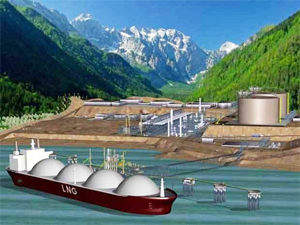Global LNG oversupply, but few US, Canadian projects postponed
LNG projects need US$11-US$12 per M/Btu to work, but prices stuck at US$7-US$8
The window for American and Canadian LNG expansion is rapidly closing, or has closed already, but few projects have been postponed so far, leading to more concerns about the global oversupply, according to a new study by consultancy Wood Mackenzie.
Wood Mackenzie says that despite the outlook for global LNG demand looking increasingly subdued, the number of LNG projects proposed to take a Final Investment Decision (FID) in 2015 and 2016 has not reduced significantly, in contrast to the 45 upstream oil and gas projects that have been postponed FID so far in 2015.
If there are no postponements, the market could see an additional 100 million tonnes per annum of LNG sanctioned in the next six to 18 months, extending the likelihood of an oversupply of LNG in Asia to 2025, Wood Mackenzie Thursday said in a press release.
“With the LNG market facing a wall of new supply just as China’s gas demand growth has faltered, it is surprising how few new projects chasing a final investment decision have been postponed,” said Noel Tomnay, VP Global Gas & LNG Research.
Global LNG supply is presently around 250 million tonnes per annum (mmtpa) and there is a further 140mmtpa under construction, says Tomnay.
“Recognising that the global market will struggle to absorb such a large supply uptick, for some time now we’ve been forecasting a soft global market,” he said. “However that bearish prognosis is now being exacerbated by a demand downturn.”
LNG prices are stuck in the US$7-US$8 per million British thermal unit range, compared to the US$11-US$12 needed long-term to make the economics feasible, according to Tomnay.
Wood Mackenzie points to Asia and China, in particular, as being key to its revised outlook. China’s LNG import commitments are set to rise by 17 per cent year-on-year between 2015 and 2020, from 20 to 41 mmtpa but China will struggle to take all this LNG so quickly.
“In contrast, China’s LNG imports fell by almost 4 per cent yoy in the first half of 2015, as a consequence of subdued industrial output and fuel competition, which was driven by relatively low priced oil,” said Tomnay.
“The outlook for longer term incremental LNG demand growth in China is also being negatively affected. And with lower industrial output and power generation competition increasingly characterising other key Asian LNG markets, like South Korea, Asian buyers are not in a hurry to finalise new LNG contracts.”
Wood Mackenzie’s view remains that the market opportunity for new LNG into Asia does not open up significantly until after 2022, with the key implication being that new project FIDs are not required until 2017 at the earliest.
So have we seen any indications that companies are reassessing investment decisions on LNG projects in light of reduced demand?
“Recognising this oversupply BG deferred its proposed US LNG export project at Lake Charles. But BG’s postponement has been an exception,” said Tomnay.
Wood Mackenzie says that thus far most companies are continuing to push ahead with their new LNG projects in the United States and Canada, which is considering over a dozen new facilities in British Columbia.
“Major project operators including Shell, PETRONAS, ENI, Anadarko, BP, ExxonMobil and Woodside maintain that their projects will take FID before the end of 2016,” Tomnay said.
So why haven’t more companies followed BG’s suit if the market is unlikely to be able to absorb new LNG in the medium to long term?
” Postponement could invalidate contracts for the portion of project LNG sold so far, and jeopardise hard-won stakeholder support, including from local communities,” said Tomnay.
“Some developers may be worried that a loss of momentum could favour their competitors and that a project postponement may be tantamount to a cancellation.”
Wood Mackenzie warns that if company statements are to be believed we will see FID on some 50 mmtpa of LNG from the US and a further 50 mmtpa from outside the US within the next 6 to 18 months.
“Development of even half of this proposed supply could prolong the Asian oversupply to 2025. Wood Mackenzie’s view is that the global LNG market does not need all this LNG at the pace proposed and, as companies confront this reality, a raft of project postponements will follow,” said Tomnay.








